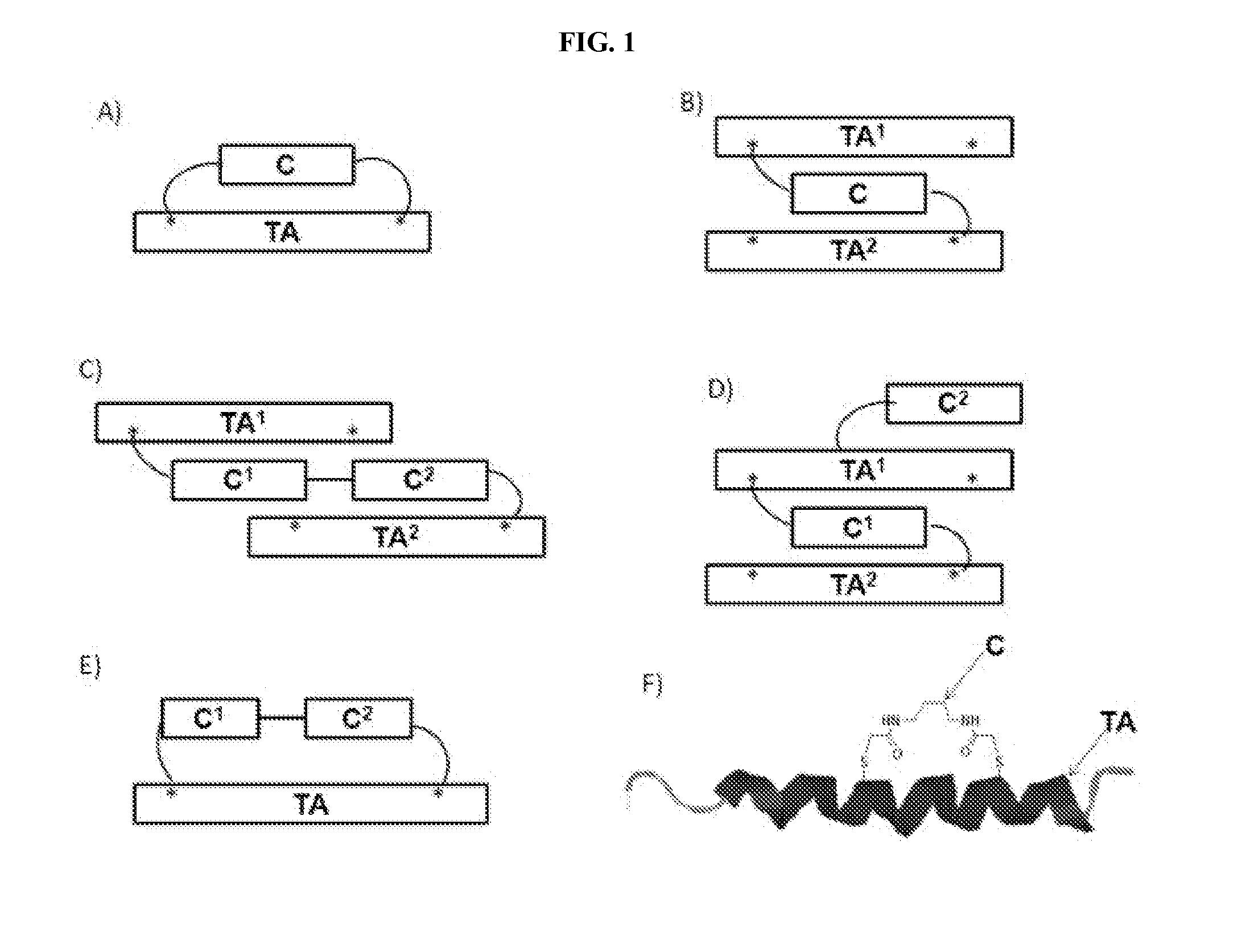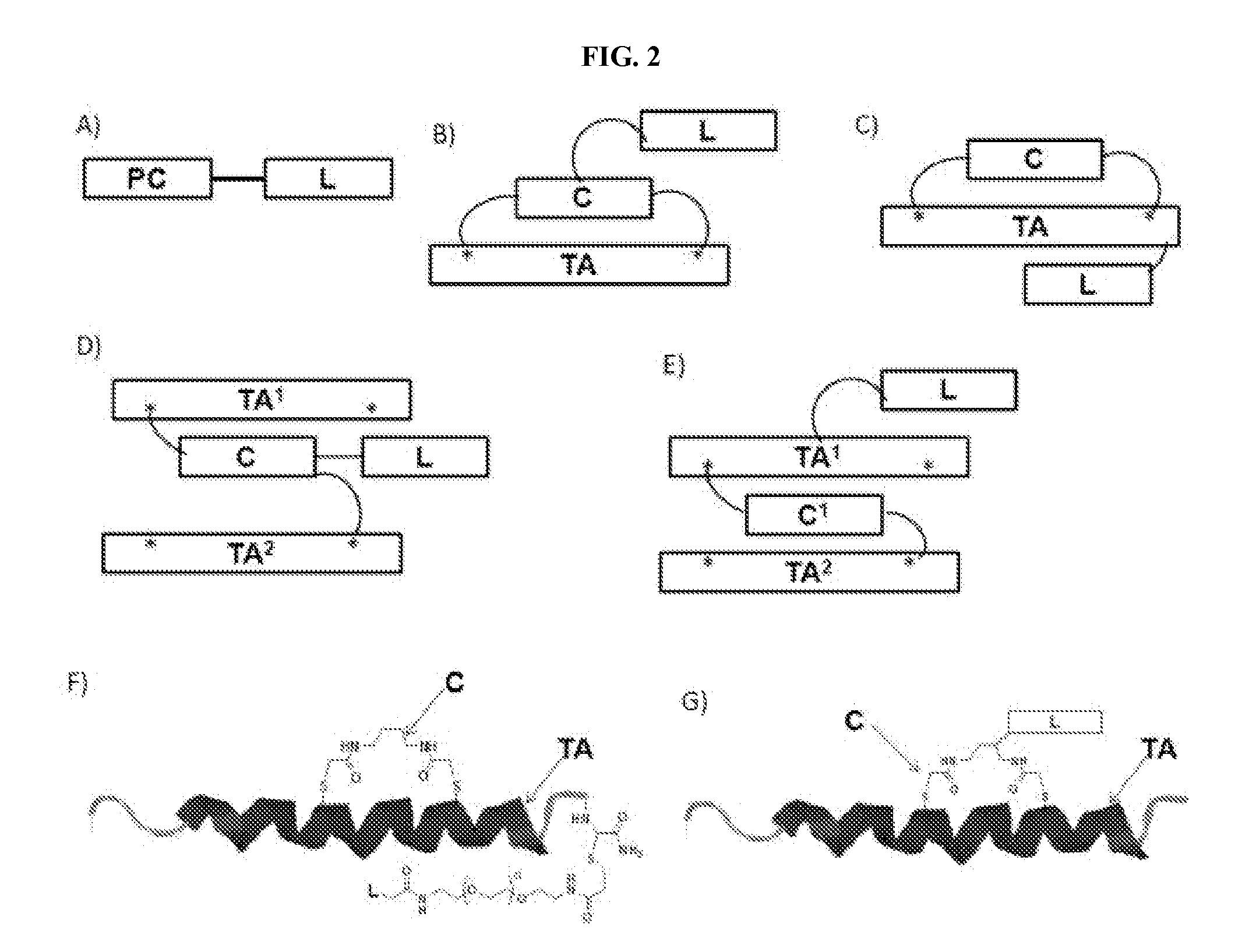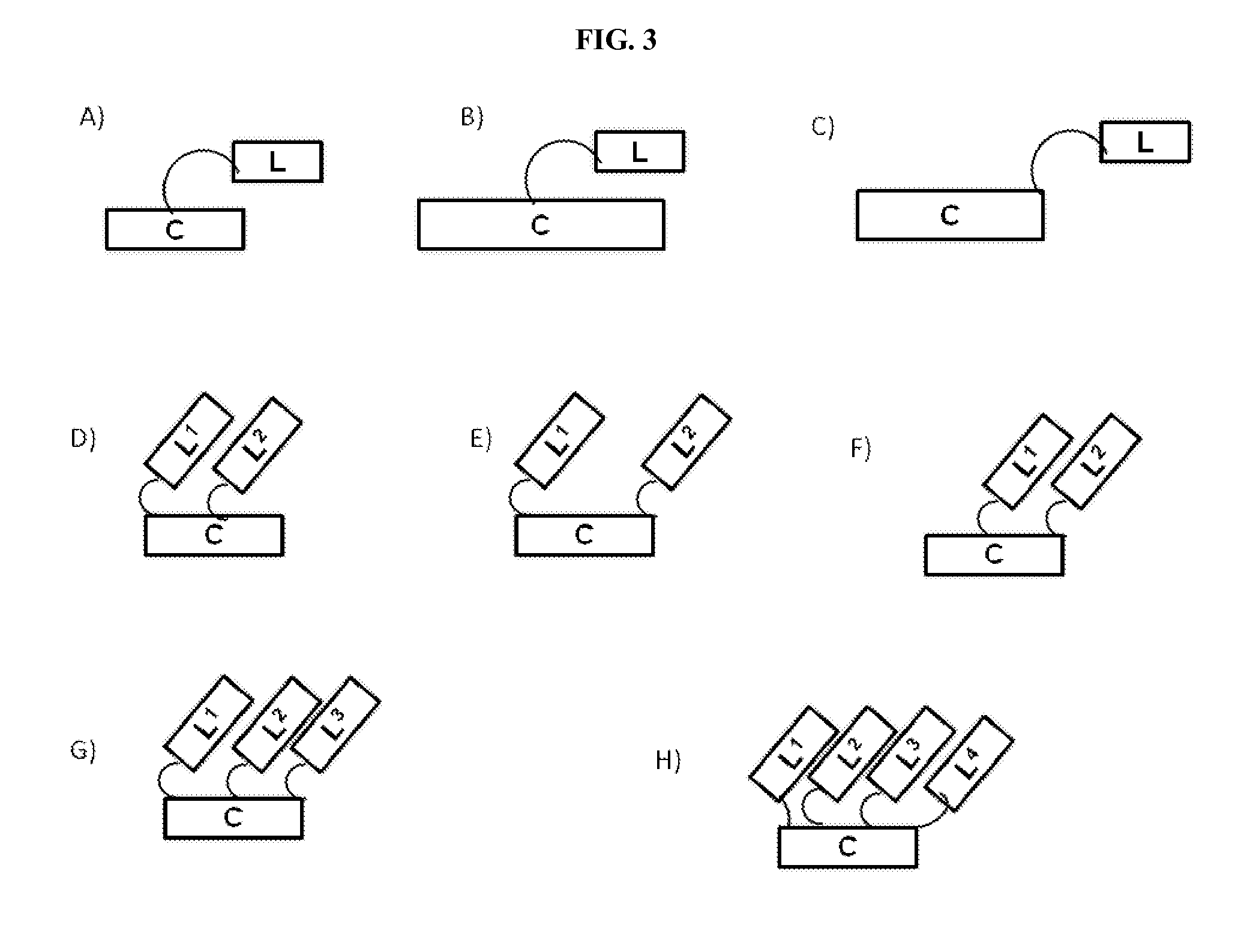Modified therapeutic agents, stapled peptide lipid conjugates, and compositions thereof
- Summary
- Abstract
- Description
- Claims
- Application Information
AI Technical Summary
Benefits of technology
Problems solved by technology
Method used
Image
Examples
example 1
Synthesis of Exemplary Lipid Derivatives (Scheme A)
[0429]
tert-Butyl (2-(2-(2-tetradecanamidoethoxy)ethoxy)ethyl)carbamate (A-2-a)
[0430]N-t-Boc-amido-dPEG3-amine (0.5 g, 2.0 mmol) was added to a solution of myristic acid (0.46 g, 2.0 mmol) in 10 ml of dry DMF, followed by HATU (0.8 g, 2.1 mmol) and DIEA (0.45 mL, 2.4 mmol). The mixture was stirred at RT for 6 h and the solvent was evaporated in vacuo. The crude material was dissolved in EtOAc, washed with cold 1% HCl, saturated NaHCO3 and brine, dried over Na2SO4, filtered and concentrated. The crude material was purified by flash column chromatography on silica gel with a gradient 25-50% EtOAc in hexanes to afford 0.83 g of desired compound as a white solid (Yield 90%). m / z (ESI+) 459.6 (M+H).
tert-Butyl (2-(2-(2-((4Z,7Z,10Z,13Z,16Z,19Z)-docosa-4,7,10,13,16,19-hexaenamido)ethoxy)ethoxy)ethyl)carbamate (A-2-b)
[0431]The title compound was prepared using analogous conditions as the procedure for A-2-a, using N-t-Boc-amido-dPEG3-amine (0...
example 2
Synthesis of Exemplary Lipid Derivatives (Schemes B-1 and B-2)
[0436]
[0437]A solution of 2-(2-(2-aminoethoxy)ethoxy)ethanol (100 mg, 0.671 mmol, 89 μL) in 4.8 mL of acetonitrile / water (6:1) was treated with di-tert-butyl dicarbonate (151 mg, 0.691 mmol), followed by 0.5 mL of 1 N NaOH (aq). After stirring at RT for 45 min, the organic solvent was removed in vacuo, the residue was dissolved in saturated NH4Cl (aq), and the desired carbamate was extracted with EtOAc. Removal of EtOAc provided 57 mg (34% yield) of tert-butyl 2-(2-(2-hydroxyethoxy)ethoxy)ethylcarbamate as a colorless oil.
[0438]A solution of tert-butyl 2-(2-(2-hydroxyethoxy)ethoxy)ethylcarbamate (68.5 mg, 0.275 mmol) and myristyl tosylate (101 mg, 0.275 mmol) in 1.4 mL of t-amyl alcohol was treated with potassium tert-butoxide (61.6 mg, 0.550 mmol) and potassium iodide (4.6 mg, 0.028 mmol). After heating to 90° C. for 2 h, the reaction was allowed to cool to rt, quenched with saturated NH4Cl (aq), then extracted with EtOA...
example 3
Synthesis of Oxyntomodulin-Lipid Conjugate with Staple (Scheme C)
[0447]
[0448]A solution of 1,4-butanediamine (0.18 g, 2 mmol) in DCM (10 mL) was treated with bromoacetic anhydride (1.1 g, 4 mmol), DIEA (0.7 mL, 4 mmol) at −20° C. The reaction mixture was then stirred for 2 h, and the solvent was removed. Purification by flash column chromatography on silica gel provided 0.53 g of L1 as a white solid (Yield 81%).
[0449]Peptide cross-linking with C4-staple to obtain intermediate C-2.
[0450]The cross-linking reaction was carried out by incubating the purified dicysteine-containing peptide C-1 with a mixed solvent solution 1.5 equiv of 1,4-dibromoacetamide butane (L1) (1.5 equiv in 1:4 CH3CN / 30 mM NH4HCO3 buffer, pH 8.5) to obtain a final peptide concentration of 1 mM. The mixture was stirred at RT for 2 h. Under ice cooling, acetic acid was then added dropwise to pH 5. Crude cross-linked peptide was then purified by preparative HPLC. The main peak was collected and lyophilized to afford ...
PUM
| Property | Measurement | Unit |
|---|---|---|
| Fraction | aaaaa | aaaaa |
| Fraction | aaaaa | aaaaa |
| Therapeutic | aaaaa | aaaaa |
Abstract
Description
Claims
Application Information
 Login to View More
Login to View More - R&D
- Intellectual Property
- Life Sciences
- Materials
- Tech Scout
- Unparalleled Data Quality
- Higher Quality Content
- 60% Fewer Hallucinations
Browse by: Latest US Patents, China's latest patents, Technical Efficacy Thesaurus, Application Domain, Technology Topic, Popular Technical Reports.
© 2025 PatSnap. All rights reserved.Legal|Privacy policy|Modern Slavery Act Transparency Statement|Sitemap|About US| Contact US: help@patsnap.com



